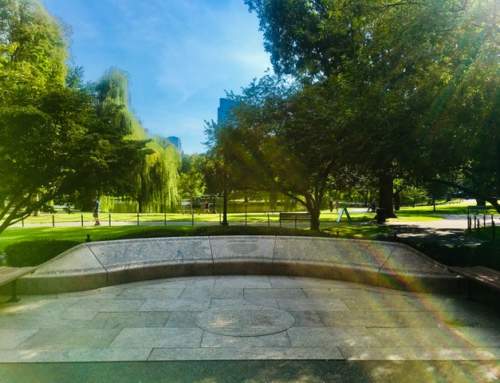By Richard Campbell
It has been well over a year (June 2016) since the developer Oranmore Enterprises dropped the deal with the Archdiocese of Boston to develop the Gate of Heaven School, presumably in favor of some group renting the space for educational or community purposes. In absence of deep pockets or imagination, local groups definitely need some help untangling an intractable situation. This is a building that should find a hybrid purpose in order to engage significant philanthropic support. For that to happen, nostalgic aspirations must be supplanted by a clear institutional mission.
The Gate of Heaven School presents so many opportunities for a creative architect, if only the stakeholders can find a real mission for the property. Instead of it viewing it as an albatross, the church should view the property as a spirited gift back to itself and the community. Innovative thinking has to take over in resetting plans to save this building for the next century.
Let it be absolutely clear that this writer advocates the public use of the building in question, whether it be educational, or for general community use, as South Boston has already given up more than enough church properties to wealthy condominiums. It is time for powerful community leaders to financially advocate something that will have a cherished future. Admittedly, the choices were limited for this building to begin with, but adding zoning restrictions along with an unrealistic price tag seems to have thwarted development plans. Nimbyism and institutional rigidity have gathered forces to create inertia. We know that whatever happens, preservation and sustainability will require leadership and donors.
South Boston is at an impasse for community works because of astronomical real estate prices. Though this is a big project in some people’s minds, compared to the Seaport development, it is small potatoes. Without significant alteration, the building as a public space is a wonderful white elephant. The minimum cost to expand the building and bring it up to code, puts it out of the range of individual investors. Various ideas have circulated on how to keep the building a school. One idea was to see the building remodeled to replace the aging Tynan School with a smaller, environmentally friendly school model. Replacing that architectural monstrosity, (thus restoring 4th street), does have a certain appeal. But in reality, neither city or parochial schools can materialize appropriate elementary student populations. Even if one considered the concept of an adult education center, it would require major expansion. However, a plan like that might have the merit of finding significant support from technology corporations in Boston.
This writer instead proposes a more modest Boston Celtic Arts Center – a cultural gem for South Boston that could provide an umbrella for local community groups. This is a concept that would speak to the soul of South Boston, not merely mercantile interests. Many neighborhoods in Boston have small performing arts /community centers to celebrate their individual cultures. City officials have been running around other neighborhoods for decades, cutting ribbons on theaters and community centers, but not in South Boston. South Boston has an aversion to the concept that the arts on main street draw audiences who patronize local businesses-even though other neighborhoods of Boston have proven how strong cultural assets can lift all boats. Interestingly, the mayor’s recent arts study revealed the lack of small performing arts spaces in Boston, and recommended such smaller spaces for neighborhood groups. A well designed Celtic Arts Museum combined with a small performing arts space would preserve culture in the neighborhood. The mystery and beauty of Celtic culture has an historical alignment with Christianity that could provide incalculable spiritual renewal in the community.
As a matter of cultural history, Celtic peoples from Scotland, Ireland, and Wales, actually make up a significant demographic group in Boston. Though diminished since the last century, people of Irish descent still make up the largest ethnic group in the Boston metro area at 22%. From dance and music to the visual arts, Celtic culture could connect South Boston to the rest of the world, and give local arts groups life extension. I submit that such a center would be a tremendous jewel in the crown of South Boston, as the treasure trove of Celtic artifacts in New England would be a curator’s dream come true. South Boston would not be waiting on one day a year to celebrate Celtic culture, but would take its rightful place in history, as the bearer of the Celtic spirit in Boston for years to come.
It is a calculated risk, but one that holds far more promise than generic office space, and should be an appealing cause for community leaders to honor. Millions of dollars are floating around the Seaport, waiting for a visionary plan to put South Boston proper on the cultural map. Beacon Hill has the African American Museum; Dorchester, the Strand; the South End has the Calderwood and the Boston Ballet; JP has the Footlight Club and the Elliot School; the North End has the North Bennet Street School. It is time for South Boston leaders to value the Gate of Heaven School, and to realize a unique public-private vision. A resourceful local architect with a proven track record restoring historical buildings could turn Gatey into an emerald gem for the community. For if there is any neighborhood that should take up the mantel of preserving Celtic cultural history of Boston, it is most certainly, South Boston.






